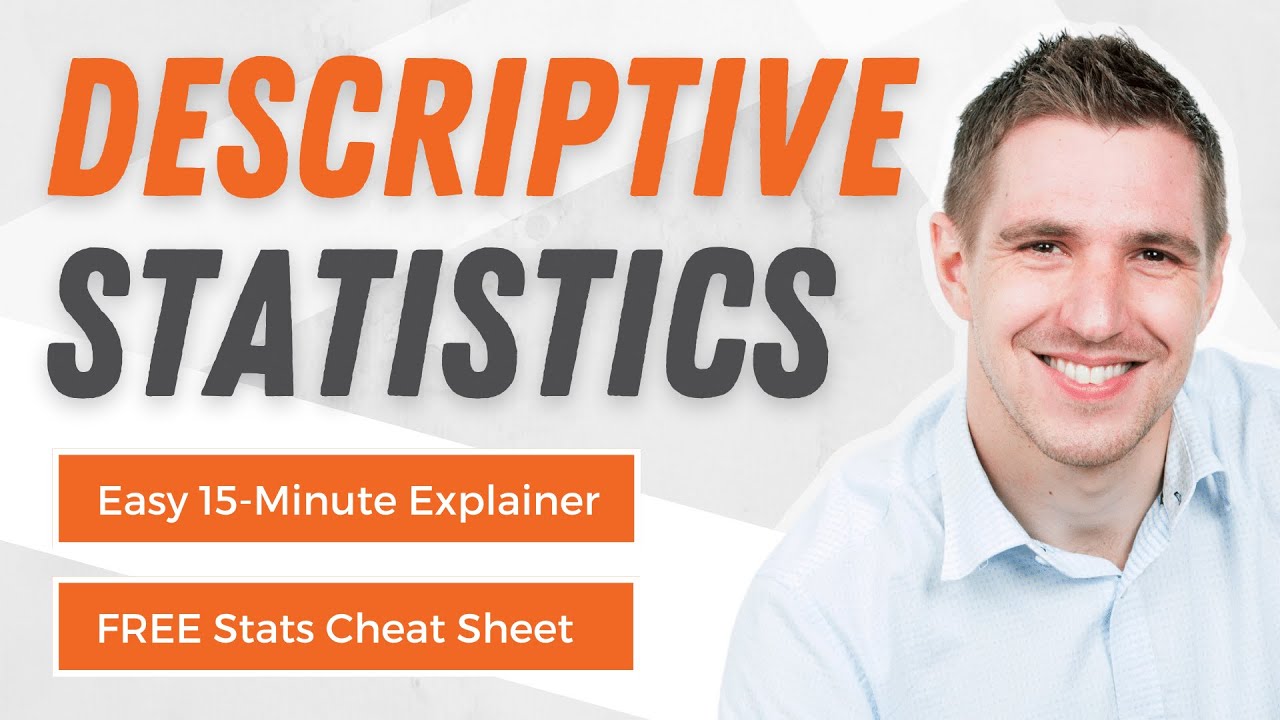Statistics: The average | Descriptive statistics | Probability and Statistics | Khan Academy
Summary
TLDRThis video introduces basic concepts of statistics, focusing on descriptive statistics and the measures of central tendency: mean, median, and mode. It explains how these measures help summarize and understand large datasets. The mean is the average, while the median is the middle value in ordered data, and the mode is the most frequent number. The video also discusses how outliers can skew the mean, making the median or mode a more accurate representation of the data in some cases. Through clear examples, the video demystifies these concepts, offering a solid foundation for understanding statistical analysis.
Takeaways
- 😀 Statistics helps in understanding and interpreting data, making it easier to draw conclusions from large datasets.
- 😀 Statistics can be broadly classified into three categories: descriptive, inferential, and predictive statistics.
- 😀 Descriptive statistics involves summarizing and presenting data in a simplified manner, without showing every data point.
- 😀 Central tendency measures like mean, median, and mode help represent the typical value in a data set.
- 😀 The mean (or arithmetic mean) is the most common measure of central tendency, calculated by adding all numbers and dividing by the count.
- 😀 The median is the middle value in an ordered data set, with a special rule for even-numbered sets where you average the two middle numbers.
- 😀 The mode refers to the most frequent value in a data set, and it can have more than one value if there are multiple modes.
- 😀 Outliers in data (values significantly higher or lower than others) can distort the mean, but the median and mode are less affected by them.
- 😀 The median provides a better representation of central tendency when there are extreme outliers in the dataset.
- 😀 The mode might be the easiest to understand since it simply reflects the most common value, but it’s not always as widely used as the mean or median.
- 😀 Statistics is a tool designed by humans to help make sense of complex data and should be used flexibly, depending on the situation.
Q & A
What are the three broad categories of statistics mentioned in the video?
-The three broad categories of statistics mentioned are descriptive statistics, inferential statistics, and predictive statistics.
What does descriptive statistics aim to do?
-Descriptive statistics aims to summarize or describe the main features of a data set, often by finding indicative numbers that represent the data without having to go over all of it.
What is the main purpose of inferential statistics?
-Inferential statistics uses data from a sample to make conclusions or inferences about a larger population.
What is meant by 'central tendency' in statistics?
-Central tendency refers to a measure that represents the center or typical value of a data set, often referred to as the average.
What are the three common measures of central tendency?
-The three common measures of central tendency are the mean, median, and mode.
How do you calculate the arithmetic mean?
-To calculate the arithmetic mean, you add all the numbers in the data set together and then divide by the number of values in the set.
What is the median, and how do you find it?
-The median is the middle value in a data set when the numbers are arranged in order. If there’s an odd number of values, it's the middle one; if there’s an even number, it's the average of the two middle values.
What is the mode, and when is it most useful?
-The mode is the value that appears most frequently in a data set. It is most useful when you want to know which value occurs most often.
What happens when a data set has multiple modes?
-When a data set has multiple modes, it is referred to as multimodal, and both modes can be considered as valid answers for the most frequent number in the set.
What is an 'outlier,' and why is it important in statistics?
-An outlier is a value that is significantly different from the rest of the data, often skewing the mean. Identifying outliers is important as they can distort the overall interpretation of a data set.
Outlines

This section is available to paid users only. Please upgrade to access this part.
Upgrade NowMindmap

This section is available to paid users only. Please upgrade to access this part.
Upgrade NowKeywords

This section is available to paid users only. Please upgrade to access this part.
Upgrade NowHighlights

This section is available to paid users only. Please upgrade to access this part.
Upgrade NowTranscripts

This section is available to paid users only. Please upgrade to access this part.
Upgrade NowBrowse More Related Video

Statistik Deskriptif

2.5 Medidas descriptivas

Medidas de forma

Statistika Dasar Ukuran Pemusatan Data (Mean, Modus, Median) Data Tunggal dan Data Kelompok

STATISTIKA PENELITIAN # 7 # (MATERI) TENDENSI SENTRAL (rerata, median, dan modus)

Descriptive Statistics: FULL Tutorial - Mean, Median, Mode, Variance & SD (With Examples)
5.0 / 5 (0 votes)